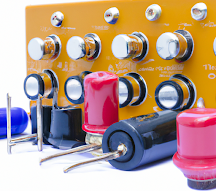Rejuvenating Vintage Vacuum Tubes
.png)
Introduction The rejuvenation of old vacuum tubes is an essential practice that allows for the revival of rare and valuable electronic devices. In this article, we will delve into the details of this crucial technique that played a fundamental role in the history of electronics. Over time, these vacuum tubes can lose their ability to emit electrons, rendering them inactive and non-functional. Therefore, learning how to rejuvenate them is vital to preserve the history and functionality of these devices. Loss of Emission in Vacuum Tubes The primary reason behind the failure of old vacuum tubes is the loss of electron emission from the filament or cathode. It is important to note that most of these tubes have significant gaps between the electrodes, making short-circuit failures very rare. The loss of emission typically becomes apparent during tube testing, when the results are weak, or the measurement needle remains static. Hence, before initiating the rejuvenation process, it









